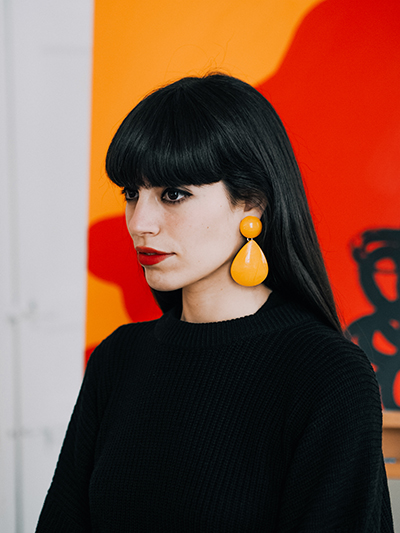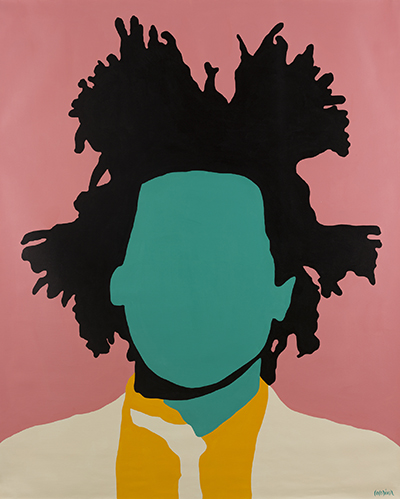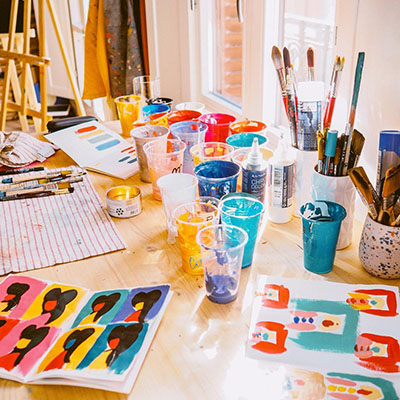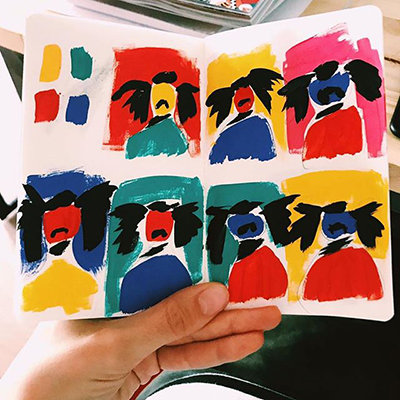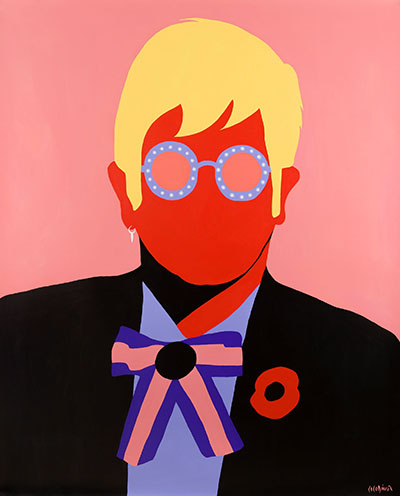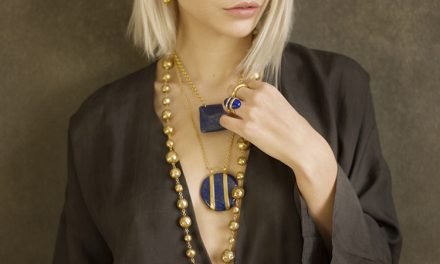The Vendeur Profile: Coco Davez
Image: Coco Davez
For the first time ever, acclaimed artist Coco Davez brings her collection ‘Faceless’ to London. To celebrate, we headed down to Maddox Gallery to speak to the Spanish artist about her influences and how she creates her work.
Coco Davez has achieved a lot before the age of 30. She was listed in the Forbes ‘30 Under 30’ list as one of the most influential artists in the world and was the only Spanish artist to be included in GQ’s ‘10 Best Artists Working Today’. Not only that but celebrated performance artist Marina Abramovic thinks she’s ‘one to watch.’ These are all heavy accolades to rest on someone’s shoulders, and it wouldn’t be surprising to see any other artist crumble under the weight of so much expectation. However, when we meet Coco Davez (real name Valeria Palmeiro) at the private view of her first solo London exhibition, she is anything by crumpled. 80’s disco music is playing loudly (her own playlist), healthy juices are flowing and Coco is excited to show us the various works that make up her latest collection.
Having arrived in London with so much fanfare, where did Coco Davez come from? Born in Madrid, she worked in London as an illustrator for Spanish newspaper El Mundo. It was here that her natural, self taught style began to emerge and she was quickly recognised for her vibrant use of colour and shape. Since then she has collaborated with a number of brands such as Chanel, Kenzo, Dior, Samsung and Puma, to name a few. Now living and working in her beloved Madrid, it seemed like the perfect time to produce a collection of work that really communicated her style and intention to the world. ‘As a self taught artist I was very frustrated and often felt like an imposter,’ she told us. Feeling the pressure to appear and behave like a professionally taught artist, her illustrations were true to life. However the work was disappointing to her. ‘It was very precise, with classic, correct illustrations. Very realistic. But I was bored by it.’
Faceless began after Davez read Patti Smith’s memoir ‘Just Kids’. To pay tribute to Patti and the life she described so vividly in her book, the artist reproduced an old photo booth portrait of her wearing flowers in her hair. As Coco details in her book ‘Faceless’, ‘the result was so awful, and my frustration for having forgotten the technique was so real that I erased her face with the leftover cadmium and cobalt blue blobs that recreated the flowers. Suddenly I saw her. Although I couldn’t see her face, I could still see Patti.’ Through Davez’s obsession with pop culture icons, she was able to explore her relationship with each one through her bold, colourful but featureless portraits. ‘When I started ‘Faceless’ I was at home, painting just for me. I needed to enjoy the process.’ The collection has since grown to incorporate a variety of recognisable figures. At the Maddox Gallery in London where the pieces are displayed, Princess Diana sits alongside Twiggy, Jean Michel Basquiat and George Michael. Downstairs, two huge portraits of Jackie Kennedy and John F Kennedy hang side by side and are joined by smaller ones of Obama and Iris Apfel.
“Suddenly I saw her. Although I couldn’t see her face, I could still see Patti.” – Coco Davez
Images Above: @cocodavez Coco experiments for colour combinations for the portraits of Amy Winehouse (left) and Frank Zappa (right).
However while each portrait is faceless, they remain uniquely identifiable. The colours of each is unexpected too. Debbie Harry’s face is blue, while Grace Jones is purple and Elton John’s is red. Davez is inspired not only by her feeling towards these icons, but also by their energy. In each, she feels a deep resonance with the subjects energy, or aura. This then becomes the colour of their face. ‘For example, Amy (Winehouse) was a very powerful women, she still is. So I used red for her face,’ Davez explains. ‘It’s a sad story but continues to be a powerful one for me.’ Every colour is vibrant and opaque, Davez works with acrylics to achieve the dense colours in each portrait.
She doesn’t shy away from political figures either. As we speak, we are seated below the large portraits of the Kennedy’s, Obama is on the opposite wall. ‘I love to depict political figures because they are people with personalities, they aren’t just their politics.’ Every subject is treated to a very personal experience when recreated by Davez, she is not clouded by other people’s assumptions about them. Hence why their facial features are removed. ‘This collection is all about my idols, and the Kennedy’s are icons for sure,’ she enthuses. ‘I think America has this amazing culture of pop icons.’
‘This collection is all about my idols, and the Kennedy’s are icons for sure.” – Coco Davez
Faceless is a not only a truthful expression of Davez’s style but also a comment on society’s obsession with celebrity. Through this collection, she feels a deep connection not only to the subject of the portraits but also the viewer. In order to really communicate her intention with each piece, the collection is accompanied by a book, ‘Faceless’. It details the reasoning behind each piece and how the subject has come to influence and shape Davez’s life and work.
The exhibition, her first as a solo artist will be on display from 10th -31st May at London, Maddox Gallery, Westbourne Grove.
Disclaimer: The people and models in the images featured are not associated with The Vendeur and do not endorse it or the products shown. This post may contain affiliate links.

